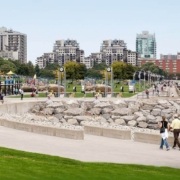Host Tips: A Local Guide to Little Haiti for Airbnb Guests
Little Haiti, a vibrant neighborhood in Miami, offers a rich cultural tapestry that immerses visitors in Haitian heritage. Known for its lively arts scene, delicious cuisine, and warm community spirit, Little Haiti is a must-visit destination for those looking to experience Miami beyond the usual tourist spots. This article provides a guide to Little Haiti for Airbnb guests, ensuring a memorable and enriching stay in this unique area.
- Airbnb Guide to Exploring Miami | MasterHost
- Top 5 Crucial Dates for Managing Airbnb in Coconut Grove, Miami
- Essential Dates for Managing Your Airbnb in South Beach

Geographical Information of Little Haiti
Location and Boundaries
Little Haiti is strategically situated just north of Miami’s well-known Design District and Wynwood neighborhoods, making it an accessible and convenient destination for visitors. The neighborhood spans an area of approximately 3.5 square miles. It is bordered by Interstate 95 to the west, providing easy access for those traveling by car. To the east, it is bordered by the Florida East Coast Railway, which not only serves as a significant landmark but also influences the area’s development and connectivity. The southern boundary of Little Haiti is marked by Northwest 54th Street, a major thoroughfare that connects the neighborhood to other parts of Miami.
Climate and Best Times to Visit
The climate in Little Haiti is classified as tropical, characterized by warm temperatures and high humidity throughout the year. The area experiences two main seasons: a wet season and a dry season. The wet season typically lasts from May to October, bringing frequent showers and occasional thunderstorms. During this period, temperatures can soar, often reaching the high 80s and low 90s Fahrenheit (around 30-35 degrees Celsius). The humidity can also make the heat feel more intense.
The dry season, which lasts from November to April, is the most pleasant time to visit Little Haiti. During these months, the weather is cooler and more comfortable, with average temperatures ranging from the mid-60s to mid-70s Fahrenheit (18-24 degrees Celsius). Rainfall is less frequent, making it ideal for outdoor activities and exploration. The cooler temperatures and lower humidity levels make it easier to enjoy the neighborhood’s attractions without the discomfort of extreme heat.
Accessibility and Transportation Options
Little Haiti is well-connected and easily accessible from various parts of Miami, making it a convenient destination for both locals and tourists. Several transportation options are available to help visitors navigate the neighborhood and beyond:
Public Buses: Miami-Dade Transit operates several bus routes that serve Little Haiti. These buses provide an affordable and reliable way to travel to and from the neighborhood. Key routes include the 9, 21, and 77 buses, which connect Little Haiti to downtown Miami, the Design District, and other nearby areas.
Rideshares: Services like Uber and Lyft are widely available in Miami, offering a convenient and flexible mode of transportation. Rideshares are a popular choice for visitors who prefer door-to-door service and the comfort of a private vehicle.
Metrorail: The nearest Metrorail station to Little Haiti is the Earlington Heights Station, located a short drive away. From this station, visitors can access the broader Metrorail network, which connects to major destinations across Miami-Dade County, including the airport, downtown Miami, and various suburbs.
Biking and Walking: Given Little Haiti’s compact size and pedestrian-friendly streets, biking and walking are excellent ways to explore the neighborhood. Several streets are equipped with bike lanes, making cycling a safe and enjoyable option. Walking allows visitors to immerse themselves in the local atmosphere, discover hidden gems, and interact with the community.
Car Rentals: For those who prefer to drive, car rental services are available throughout Miami. Renting a car provides the flexibility to explore Little Haiti and its surrounding areas at your own pace. Parking is generally available in the neighborhood, though it’s advisable to check for any restrictions or designated parking zones.
In summary, Little Haiti’s strategic location, favorable climate during the winter months, and diverse transportation options make it an accessible and attractive destination for visitors looking to experience the rich culture and vibrant community of this unique Miami neighborhood.

Cultural Insights of Little Haiti
Historical Background
Little Haiti’s rich cultural tapestry began weaving itself in the 1980s when Haitian immigrants started to settle in this Miami neighborhood. Seeking refuge from political instability and economic hardships in Haiti, these immigrants brought with them their vibrant culture, deep-rooted traditions, and resilient spirit. Over the decades, Little Haiti has grown into a thriving community that serves as a cultural and social hub for Haitians in Miami and beyond. The neighborhood’s development is marked by a strong sense of identity and pride, reflecting the struggles and triumphs of its residents.
Cultural Legacy and Impact
The influence of Haitian culture in Little Haiti is profound and omnipresent. This heritage is celebrated through various cultural expressions, from colorful murals depicting Haitian heroes and historical events to lively music that fills the streets. The neighborhood is a microcosm of Haiti itself, offering a rich sensory experience that includes the sights, sounds, and flavors of the island nation.
Art and Music: Little Haiti is renowned for its vibrant art scene, which includes galleries, street murals, and the Little Haiti Cultural Complex. This complex is a cornerstone of the community, offering a space for artists to showcase their work and for the public to engage with Haitian culture. Music is another integral part of life in Little Haiti. The rhythmic beats of compas, a genre of Haitian dance music, can be heard in local venues, often accompanied by traditional dances. Live music performances are common, especially during festivals and community events.
Cuisine: The culinary offerings in Little Haiti are a testament to the rich flavors of Haitian cuisine. Visitors can indulge in traditional dishes such as griot (fried pork), tassot (fried beef), and diri ak djon djon (rice with black mushrooms). Local eateries and street vendors provide an authentic taste of Haiti, ensuring that the culinary heritage remains a central part of the community’s identity.
Local Customs and Traditions
Haitian customs and traditions emphasize the importance of community, family, and hospitality. These values are evident in the everyday interactions and social practices within Little Haiti.
Community and Family: Family is the cornerstone of Haitian society, and this is reflected in the tight-knit nature of the Little Haiti community. Residents often gather for communal activities, religious services, and cultural events, fostering a strong sense of belonging and mutual support. Celebrations such as baptisms, weddings, and festivals are significant events that bring together extended families and the broader community.
Hospitality: Hospitality is a deeply ingrained aspect of Haitian culture. Visitors to Little Haiti will find that locals are warm, welcoming, and eager to share their culture. It is common to be greeted with a friendly “Bonjour” (Good morning) or “Bonsoir” (Good evening). Engaging in conversations and showing genuine interest in the community can lead to enriching exchanges and lasting friendships.
Religious Practices: Religion plays a vital role in the lives of many residents of Little Haiti. The predominant faith is Roman Catholicism, interwoven with elements of Vodou, a spiritual practice with African roots. Religious services, rituals, and celebrations are integral parts of the community’s cultural fabric, providing spiritual sustenance and social cohesion.
Language and Communication Tips
Language can sometimes pose a barrier for visitors, as many residents of Little Haiti speak Haitian Creole or French. However, English is widely understood and spoken, particularly among younger generations and those in the service industry.
Haitian Creole: Haitian Creole is the most commonly spoken language in Little Haiti. It is a blend of French, African languages, and influences from Spanish, English, and indigenous Caribbean languages. While most residents understand and can communicate in English, learning a few basic Creole phrases can greatly enhance interactions and show respect for the local culture. Phrases such as “Mèsi” (Thank you), “Silvouplè” (Please), and “Kijan ou ye?” (How are you?) are valued and can aid in closing the language gap.
French: French is also spoken by many, particularly older residents and those who received formal education in Haiti. Using French greetings and phrases can also facilitate smoother communication.
Tips for Visitors: When engaging with locals, a warm smile and polite demeanor go a long way. Showing curiosity about the culture and willingness to learn can lead to meaningful connections. Residents are often eager to share their stories, traditions, and recommendations, making interactions enriching and memorable.
Must-Visit Attractions of Little Haiti
Little Haiti Cultural Complex
The Little Haiti Cultural Complex is a pivotal hub in the neighborhood’s cultural scene. This dynamic hub is dedicated to the celebration and preservation of Haitian heritage through a variety of artistic and cultural expressions. Visitors can explore multiple art galleries that showcase contemporary and traditional Haitian art. The complex regularly hosts live music and dance performances that highlight the rich musical traditions of Haiti, including genres such as compas, rara, and zouk. Additionally, the complex offers cultural workshops where visitors can learn traditional Haitian crafts, participate in dance classes, or attend lectures on Haitian history and culture. These activities provide a deep and engaging insight into the vibrant cultural life of Little Haiti.
Caribbean Marketplace
The Caribbean Marketplace, inspired by the famous Iron Market in Port-au-Prince, is a bustling center of commerce and culture. This marketplace is a lively and colorful space where local artisans sell a wide range of crafts, clothing, jewelry, and food items. It serves as an excellent spot for souvenir shopping, offering unique handmade items that reflect the artistic traditions of Haiti. Beyond shopping, the Caribbean Marketplace is a cultural experience in itself, with its vibrant atmosphere, regular live music, and cultural performances. The marketplace is a focal point for the community, bringing together locals and visitors to celebrate and enjoy the rich cultural tapestry of Little Haiti.
Haitian Heritage Museum
The Haitian Heritage Museum is a pivotal institution dedicated to the preservation and promotion of Haitian culture and history. The museum features rotating exhibits that include Haitian art, historical artifacts, and cultural memorabilia. These exhibits provide a comprehensive overview of Haiti’s rich history, from its indigenous roots and colonial past to its role as the first independent Black republic. The museum also hosts educational programs, lectures, and cultural events that aim to educate the public about the significant contributions of Haitians to global culture. It is an invaluable resource for anyone interested in understanding the depth and breadth of Haitian cultural heritage.
Historic Landmarks and Buildings
Little Haiti is home to several historic landmarks and buildings that reflect the neighborhood’s architectural and cultural heritage. One of the most notable landmarks is the Notre Dame d’Haiti Catholic Church, which serves as a spiritual and cultural center for the Haitian community in Miami. The church’s architecture and interior design incorporate elements of Haitian art and culture, making it a unique and significant site. Additionally, the neighborhood is adorned with colorful murals and street art that depict various aspects of Haitian history, culture, and everyday life. These murals, found along main streets like Northeast 2nd Avenue, offer a vibrant and visually captivating exploration of the community’s identity and heritage.
Art Galleries and Street Murals
Little Haiti’s artistic spirit is palpable, with numerous art galleries and street murals that celebrate both local and Haitian artists. Galleries such as the Yeelen Gallery showcase contemporary art that often explores themes of identity, culture, and social justice. These galleries provide a platform for both established and emerging artists to present their work, fostering a thriving artistic community. The street murals of Little Haiti are equally significant, transforming the neighborhood’s walls into a public art gallery. These murals, painted by local and international artists, offer powerful visual stories that reflect the community’s resilience, pride, and cultural heritage. Walking along the streets of Little Haiti, visitors can enjoy this open-air museum that beautifully narrates the neighborhood’s history and artistic vibrancy.

Activities and Experiences of Little Haiti
Live Music and Nightlife
Little Haiti’s music scene is a dynamic blend of traditional and contemporary sounds, making it a hotspot for live performances. The neighborhood pulses with the rhythms of Haitian compas, jazz, and reggae, providing a vibrant nightlife experience.
Popular Venues:
- Caribbean Marketplace: This venue is not just for shopping; it also transforms into a lively music scene where visitors can enjoy live bands and dance to the beats of compas and other Caribbean music genres.
- Ball & Chain: While not in Little Haiti but nearby in Little Havana, this iconic venue often features live music with a Caribbean flair, providing an energetic atmosphere that complements the vibrant culture of Little Haiti.
- Churchill’s Pub: Located just on the edge of Little Haiti, this legendary pub is known for its diverse music scene, including reggae and other Caribbean music nights that attract a lively crowd.
Experience:
- Live Performances: Catching a live performance at one of these venues is an immersive experience, where you can dance the night away and experience the infectious energy of Haitian music.
- Dance Floors: Many of these venues have dance floors where both locals and visitors can enjoy dancing together, creating a lively and inclusive atmosphere.
Local Festivals and Events
Little Haiti hosts numerous festivals and events throughout the year that celebrate its rich cultural heritage. These events are a great way to experience the community’s spirit and traditions firsthand.
Annual Events:
- Little Haiti Book Festival: Held annually, this festival celebrates Haitian literature and culture with book readings, panel discussions, and workshops. It is a gathering for authors, poets, and readers who share a love for Haitian literary works.
- Haitian Compas Festival: This music festival is one of the largest in the Haitian community, featuring performances by top Haitian artists and bands. It is a celebration of Haitian music and dance, attracting thousands of attendees.
- Art Beat Miami: Occurring monthly, this art event showcases local and international artists, musicians, and performers. It includes art exhibits, live music, and cultural performances, offering a vibrant cultural experience.
Experience:
- Cultural Immersion: These events provide a comprehensive cultural experience, with a mix of music, dance, art, and food that highlights the best of Haitian culture.
- Community Participation: Attending these festivals allows visitors to engage with the community, participate in cultural activities, and gain a deeper understanding of Haitian traditions.
Art and Craft Workshops
Little Haiti is a haven for artists and artisans who are eager to share their skills and traditions with visitors. Participating in these workshops provides a hands-on way to connect with the local culture.
Types of Workshops:
- Painting: Learn traditional Haitian painting techniques, including vibrant colors and symbolic themes, guided by local artists.
- Drumming: Engage in drumming workshops that teach the rhythms and techniques of Haitian music, providing an energetic and immersive experience.
- Beadwork: Discover the art of beadwork, creating intricate designs that are a significant part of Haitian craft traditions.
Experience:
- Hands-On Learning: These workshops offer practical, hands-on learning experiences where visitors can create their own pieces of art or craft.
- Cultural Connection: Participating in these workshops not only hones new skills but also connects visitors with the cultural heritage and artistic traditions of Haiti.
Walking Tours and Guided Visits
Exploring Little Haiti on foot, accompanied by knowledgeable guides, provides a rich and informative experience of the neighborhood’s history and culture.
Tour Highlights:
- Historic Landmarks: Tours often include visits to significant landmarks such as the Notre Dame d’Haiti Catholic Church and the Little Haiti Cultural Complex.
- Art Installations: Discover the vibrant street art and murals that depict various aspects of Haitian culture and history.
- Local Insights: Guides share stories and insights about the neighborhood’s development, significant events, and notable figures.
Experience:
- In-Depth Exploration: Walking tours offer a deeper understanding of Little Haiti’s cultural and historical context, enhancing the overall visitor experience.
- Personal Interaction: Engaging with local guides provides an opportunity for personal interaction and a more intimate exploration of the neighborhood.
Community Engagement Activities
For visitors looking to make a meaningful impact and connect more deeply with the local community, engaging in community activities is a rewarding option.
Opportunities:
- Volunteering: Many local organizations welcome volunteers to help with community projects, educational programs, and cultural events.
- Community Events: Participating in neighborhood clean-ups, cultural celebrations, and community meetings can provide a deeper understanding of local issues and initiatives.
Experience:
- Meaningful Connections: Engaging in community activities fosters meaningful connections with residents and provides a deeper appreciation of the neighborhood’s communal spirit.
- Contribution: Volunteering and participating in community efforts allow visitors to give back and contribute to the well-being of Little Haiti.
In summary, Little Haiti offers a plethora of activities and experiences that cater to diverse interests. From lively music and nightlife to immersive cultural festivals, hands-on art workshops, informative walking tours, and community engagement, there is something for everyone to enjoy and learn from in this vibrant neighborhood.

Safety and Health Precautions in Little Haiti
General Safety Tips
While Little Haiti is generally considered safe for tourists, it is essential to exercise common-sense precautions to ensure a secure and enjoyable visit.
- Remain Vigilant: Continuously stay alert to your surroundings, particularly when in unfamiliar places. Avoid distractions such as using your phone while walking and stay alert to any unusual activities around you.
- Avoid Poorly Lit Areas at Night: Stick to well-lit, populated areas, particularly after dark. Avoid walking by yourself in secluded or poorly lit areas.
- Secure Your Valuables: Keep your personal belongings, such as wallets, phones, and cameras, secure. Use a money belt or a crossbody bag to minimize the risk of theft. Avoid displaying valuable items, such as jewelry or expensive electronics, in public.
- Use Reliable Transportation: Opt for reputable transportation services like rideshares (Uber, Lyft) or well-known taxi companies. If using public transportation, be aware of your belongings and avoid empty compartments.
Health Services and Facilities
Little Haiti is equipped with several health services and facilities to address minor health concerns and emergencies.
- Clinics and Pharmacies: There are multiple clinics and pharmacies in and around Little Haiti where visitors can obtain over-the-counter medications, prescription drugs, and basic medical care. Some notable clinics include the Borinquen Medical Centers and Jessie Trice Community Health Center.
- Jackson Memorial Hospital: For more serious medical concerns, Jackson Memorial Hospital, a comprehensive medical facility, is a short drive away. The hospital offers a wide range of services, including emergency care, specialized treatments, and inpatient care.
Emergency Contacts and Procedures
Knowing the appropriate emergency contacts and procedures can make a significant difference in urgent situations.
- Emergency Numbers: Dial 911 for police, fire, or medical emergencies. This number is universally recognized and connects you to local emergency services.
- Nearest Police Station: Familiarize yourself with the location of the nearest police station for any security concerns or to report incidents. The City of Miami Police Department’s Little Haiti Substation is located at 100 NW 62nd Street.
- Hospital Locations: In addition to Jackson Memorial Hospital, knowing the location of nearby medical facilities can be useful. For minor injuries or health concerns, local urgent care centers like MedRite Urgent Care can provide quick medical attention.
- Local Contacts: If staying in an Airbnb or with a host, ask for local emergency contact numbers and any specific instructions they might have for dealing with emergencies.

Local Cuisine in Little Haiti
Overview of Haitian Cuisine
Haitian cuisine is a vibrant and flavorful blend that draws from African, French, and Caribbean culinary traditions. This unique fusion results in dishes that are rich in taste, aromatic, and visually appealing. The cuisine is characterized by the use of fresh, locally sourced ingredients, including a variety of vegetables, meats, and seafood. Bold spices and herbs, such as thyme, cloves, and Scotch bonnet peppers, are staples in Haitian cooking, imparting depth and complexity to the dishes. Additionally, the culinary techniques reflect a history of cultural exchanges and adaptations, making Haitian food a delightful exploration of diverse flavors and textures.
Must-Try Dishes and Drinks
Visitors to Little Haiti should not miss the opportunity to indulge in some of the most iconic Haitian dishes and beverages.
Dishes:
- Griot: This beloved dish consists of marinated and fried pork chunks, often served with pikliz (a spicy pickled vegetable relish) and fried plantains. The meat is flavorful and tender, making it a must-try.
- Tassot: Similar to griot, tassot is made with beef or goat meat that is marinated, fried, and served with sides like plantains or rice. The crispy exterior and juicy interior make it a favorite among locals.
- Legume: A hearty vegetable stew that often includes eggplant, chayote, cabbage, and sometimes meat or seafood. It is typically served over rice and is a comforting, wholesome dish.
- Accra: These are savory fritters made from malanga (a type of root vegetable) and spices, often enjoyed as a snack or appetizer.
Drinks:
- Barbancourt Rum: A renowned Haitian rum that is smooth and flavorful, often enjoyed neat or in cocktails.
- Akasan: A traditional cornmeal drink that is sweet and creamy, typically flavored with vanilla and spices.
- Fresh Tropical Juices: Haiti’s tropical climate provides an abundance of fruits like mangoes, papayas, and passion fruits, which are used to make refreshing and delicious juices.
Food Tours and Culinary Experiences
For those looking to delve deeper into Haitian cuisine, organized food tours and culinary experiences are highly recommended.
- Food Tours: These guided tours take visitors to some of the best eateries, markets, and food stalls in Little Haiti. Participants can sample a wide range of dishes, learn about their cultural significance, and meet the chefs and vendors who prepare them.
- Cooking Demonstrations: Many food tours include cooking demonstrations where visitors can watch local chefs prepare traditional dishes and even participate in the cooking process. These demonstrations offer valuable insights into the techniques and ingredients used in Haitian cooking.
- Culinary Workshops: Some tours also offer hands-on workshops where participants can learn to cook Haitian dishes themselves. These workshops are an excellent way to bring a piece of Haitian culture back home and share it with others.
In summary, Little Haiti’s culinary scene is a rich tapestry of flavors and traditions that reflect the neighborhood’s vibrant cultural heritage. From hearty traditional dishes and refreshing tropical drinks to lively markets and immersive food tours, there are countless ways to explore and enjoy the unique cuisine of Little Haiti.
Conclusion
Little Haiti is a hidden gem in Miami that offers a unique blend of culture, art, and cuisine. By following this guide, Airbnb hosts can help their guests make the most of their visit, ensuring they experience the rich heritage and vibrant community of Little Haiti. From exploring historic landmarks to indulging in delicious Haitian food, there’s something for everyone in this dynamic neighborhood. With the help of this guide to Little Haiti for Airbnb guests you can encourage them to dive deep into the local culture, engage with the community, and create unforgettable memories during their stay.












